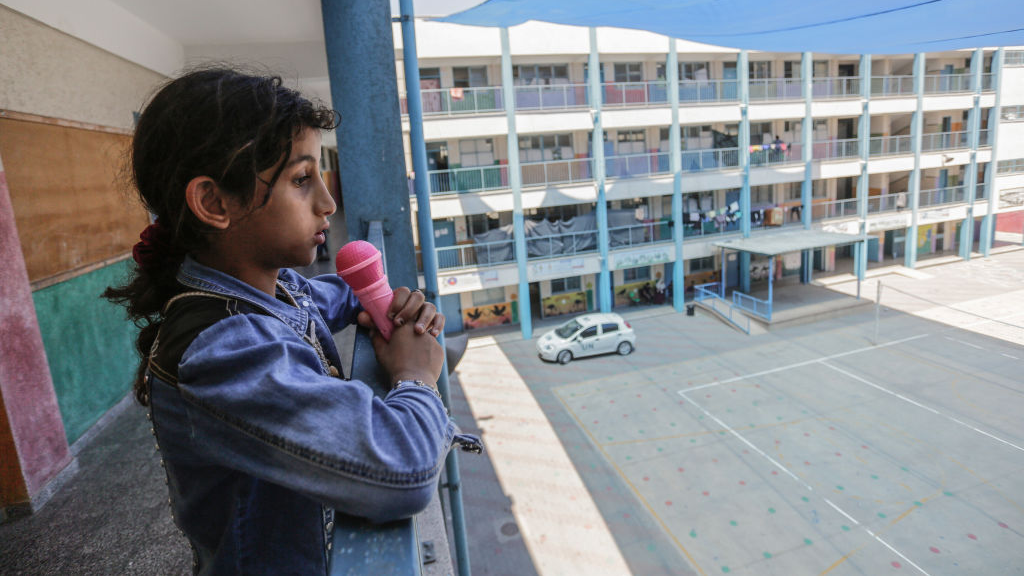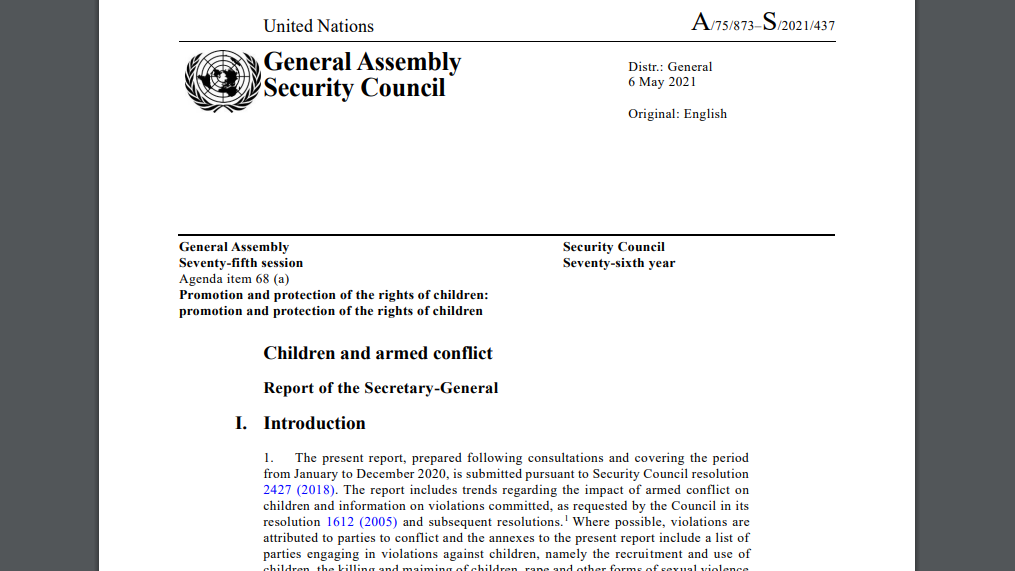
A Palestinian girl shelters in a United Nations-run school after her home was destroyed in Israeli air strikes during the 11-day war between Hamas leaders in Gaza and Israel at the Shati refugee camp in Gaza City. /Getty
A Palestinian girl shelters in a United Nations-run school after her home was destroyed in Israeli air strikes during the 11-day war between Hamas leaders in Gaza and Israel at the Shati refugee camp in Gaza City. /Getty
Editor's note: Hamzah Rifaat Hussain is a former visiting fellow at the Stimson Center in Washington and serves as an assistant researcher at the Islamabad Policy Research Institute (IPRI) in Pakistan. The article reflects the author's opinions and not necessarily the views of CGTN.
Great power interventions, active military deployments and the inability to devise tenable, all-encompassing and comprehensive post-conflict strategies anchored in rehabilitation and reintegration have had a severe impact on conflict-stricken populations in countries ranging from Syria to Afghanistan.
In 2021, the most vulnerable groups, including women and children, continue to be disproportionately affected, as the latest revelations in the United Nations Children and Armed Conflict report (CAAC) of the secretary-general underlines. For peaceniks and pacifists, exploring solutions is the key to resolving the plight of children.
The truth is that in the post-colonial world order, interventions hinging on pursuing neoliberal ideals, which have often translated into government change, arms sales and active involvement in conflicts, have resulted in lingering humanitarian quagmires, with at least 19,379 children becoming victims of recruitment and rape by wars in 2020.
Brokering sustainable, not short-lived ceasefires in the presence of a pervasive pandemic, as is the case with the Israeli-Palestinian conflict or internally in the form of Afghanistan peace negotiations, have not materialized nor mitigated the suffering of conflict-torn populations.
What is being witnessed are transactional approaches revolving around short-term frameworks or cosmetic calls for peace without any reduction in violence in Afghanistan, Syria, Iraq, Libya or Ethiopia.
As encapsulated in the report's findings, the results are that 26,425 grave violations against children occurred across the world, with 91 percent in 2020 alone. There is more to managing conflicts than simple troop withdrawals.

A screenshot of the first page of the Annual Report of the Secretary-General on Children and Armed Conflict. / un.org
A screenshot of the first page of the Annual Report of the Secretary-General on Children and Armed Conflict. / un.org
As a continent, Africa continues to be unfairly and disproportionately affected despite already being at the receiving end of vaccine inaccessibility. Lingering conflicts in Mali, the wider Sahel region and the presence of transnational terrorism in countries such as Nigeria have worsened the plight of children in African states. The report lists grave violations in countries, such as the Democratic Republic of Congo and Somalia, with verified cases of sexual violence against children increasing by an alarming rate of 70 percent to 90 percent.
A closer examination hints at how each case study cited is has lingering internal conflicts, power play from colonial powers and the absence of peace agreements and mediatory efforts resulting in a crippled social milieu, with children being ultimate casualties.
Note that the United States, which has prided itself on humanitarian intervention in conflict-torn countries, has not pursued mediatory efforts through multilateral mechanisms with an inherent obsession with Indo-Pacific strategies laced with arms buildups and provocations.
The lack of attention given to conflict resolution results in a simple blowback: lost generations in the presence of a pervasive pandemic.
Further note that the CAAC report also underlines how the pandemic aggravated already tenuous environments in continents such as Africa, where a lack of access to education, health and social services for children and a spike in hospital and school attacks characterize troubled landscapes as diverse as Niger and Mauritania.
The Secretary-General's Special Representative on CAAC, Virginia Gamba, summed up the plight of children by claiming that the war of adults has taken away the childhoods of boys and girls in 2020, which is not only devastating for peace but takes away entire communities they once lived in. Civil unrests are becoming more prominent and permanent, with the question centering on why calls for ceasefires and prospects for peace need to be reinforced.
The solution lies in pursuing concerted efforts toward ensuring that freedom from poverty and terrorism materializes for conflict-torn populations and shelving great-power intervention or shortsighted policies for post-conflict reconstruction.
Strategies such as seeking active involvement in the form of air and military bases in Pakistan on the Afghanistan question, despite a stated position of disengagement or absence of neutrality in the Middle East, will only hurt prospects for peace.
The equation is simple: Prolonging conflicts will result in children being the ultimate casualties. It is high time to stress the cessation of hostilities and swift implementation of ceasefires, without which the plight of the vulnerable may not change.
(If you want to contribute and have specific expertise, please contact us at opinions@cgtn.com.)

